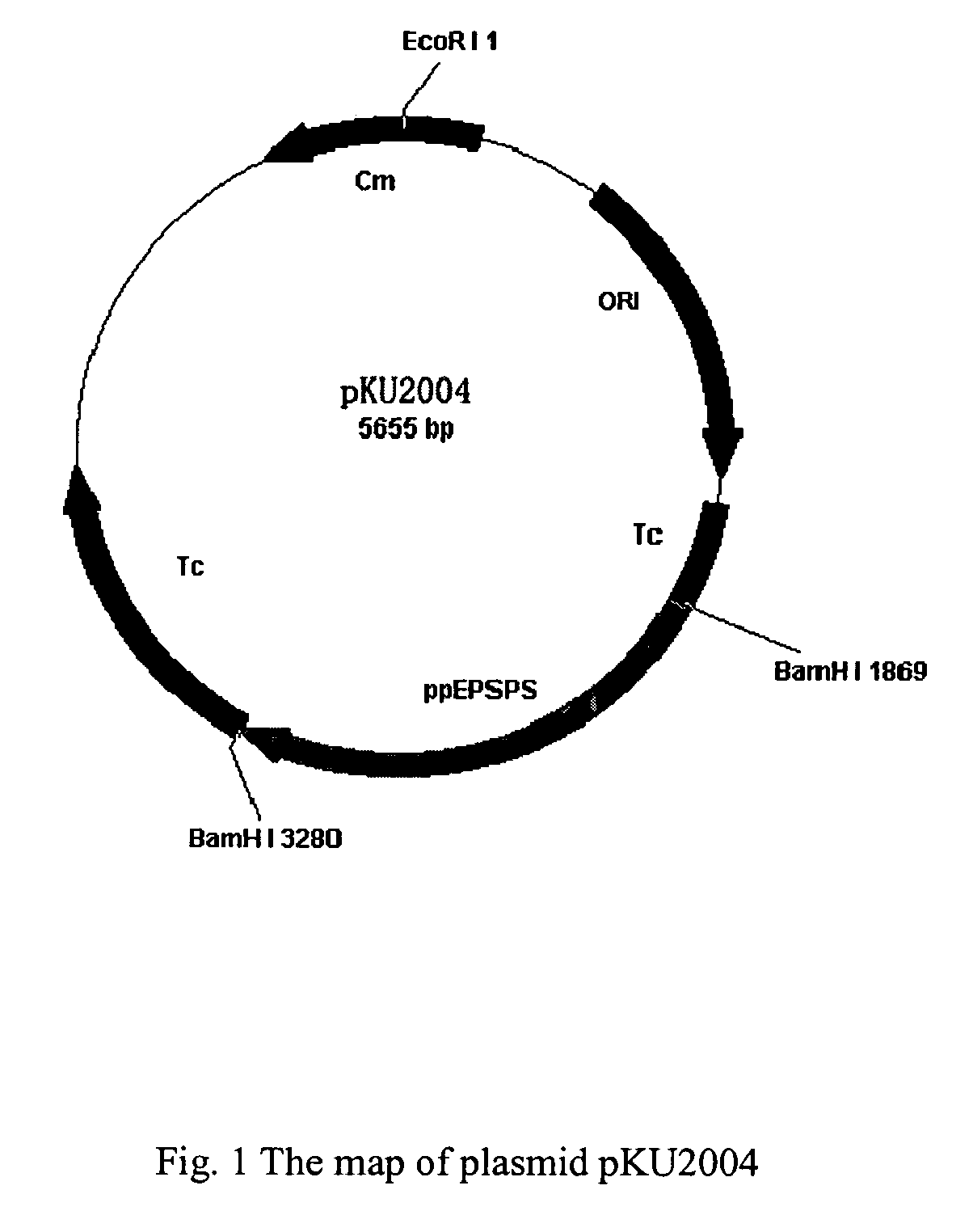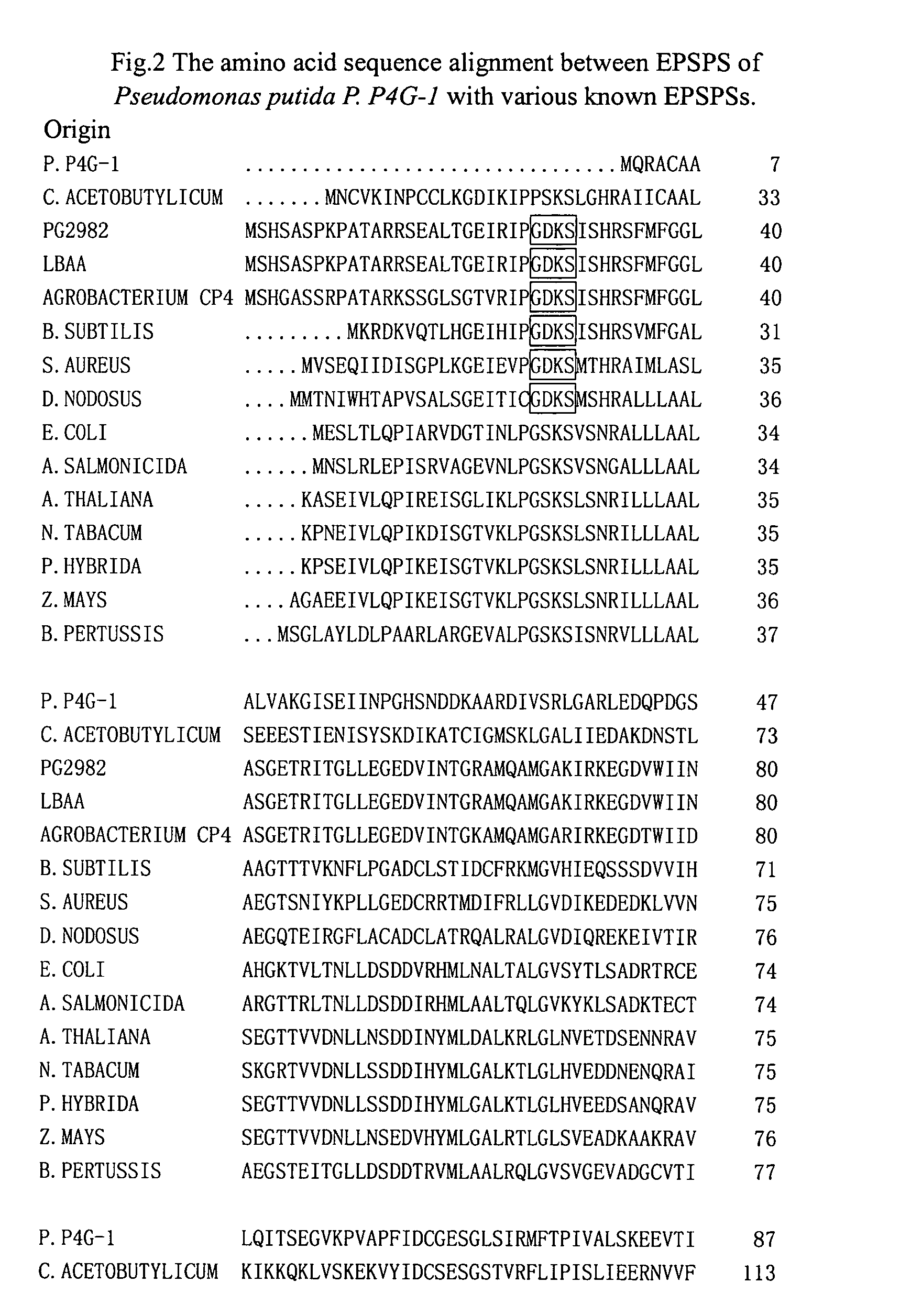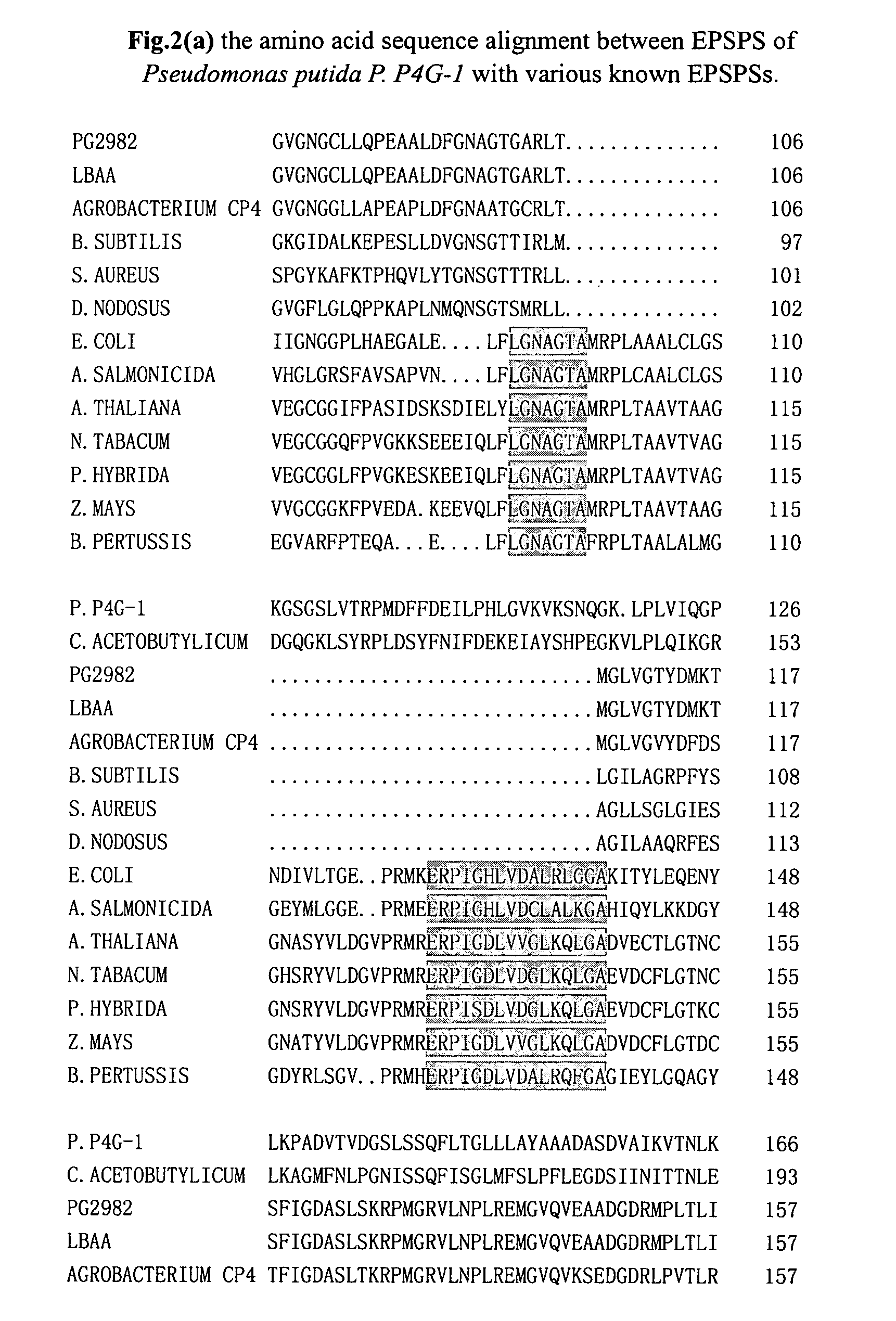Glyphosate-tolerant 5-enolpyruvylshikimate-3-phosphate synthase and the gene encoding the same
a technology of pyruvyl shikimate and phosphate, which is applied in the direction of enzymology, tranferases, organic chemistry, etc., can solve the problems of plants and bacteria's death
- Summary
- Abstract
- Description
- Claims
- Application Information
AI Technical Summary
Benefits of technology
Problems solved by technology
Method used
Image
Examples
example 1
Isolation of Gylphosate-Tolerant Strains
[0051]The sample were taken from neighborhood of a glyphosate producing factory in Hebei Province, China, and were diluted and spread on mediums comprising glyphosate. A total of 48 strains are isolated with high tolerance and degradation ability to glyphosate. One strain of them, 4G-1, is able to grow on a medium with 400 mM glyphosate, and is resistant to 100 mg / L Ampicillin. Said strain is selected for further studies.
example 2
Identification of Glyphosate-Tolerant Strains
a) Mini-Prep of the Total DNA of Strain 4G-1
[0052]Strain 4G-1 is inoculated in 3 ml of LB liquid medium with 100 mg / L Ampicillin, and cultured at 28° C. overnight while shaking. The culture is centrifuged at 12000 rpm and the pellet is resuspended in 0.5 ml of Solution I (10 mM NaCl, 20 mM Tris-Hcl pH 8.0, 1 mM EDTA). Protease K (Merck, Germany) and SDS are added to a final concentration of 10 μg / ml and 0.5%, respectively. The suspension is then mixed by careful reversion, and then left at 50° C. for more than 6 hrs. An equal volume of phenol is added. The mixture is carefully reversed and left at room temperature for 10 min. Then, the mixture is centrifuged at 12000 rpm at room temperature for 5 min. The supematant aqueous phase is drawn out with tips (Axy Gen, USA), and the pellet is reextracted with equal volume of phenol / chloroform. The supematant is added with 10% of 3M NaAC and 2.3 volume of ethanol for precipitation. The mixture is...
example 3
Construction of the Genomic Library of Strain 4G-1
a) Maxi-prep of the Total DNA of 4G-1
[0056]The strain P. P4G-1 is inoculated into 100 ml of LB medium (supplemented with 100 mg / L Ampicillin) in a 250 ml flask, and cultured at 28° C. overnight while shaking at 200 rpm. The culture is centrifuged at 8000 rpm for 5 min, then the pellet is resuspended in 14 ml of Solution I. Protease K (Merck, Germany) and SDS are added to a final concentration of 10 μg / ml and 0.5%, respectively. The mixture is mixed by careful reversion and left at 50° C. for more than 6 hr. An equal volume of phenol is added. The mixture is carefully reverted and left at room temperature for 10 min. The mixture is centrifuged in room temperature at 4000 rpm for 20 min. The supematant aqueous phase is-drawn with wide-end tips, and extracted with equal volume of phenol / chloroform. The supematant is added with 10% of 3M NaAC (pH 5.5) and 2.3 volume of ethanol for precipitation. The DNA is carefully picked out using a g...
PUM
| Property | Measurement | Unit |
|---|---|---|
| concentration | aaaaa | aaaaa |
| pH | aaaaa | aaaaa |
| pH | aaaaa | aaaaa |
Abstract
Description
Claims
Application Information
 Login to View More
Login to View More - R&D
- Intellectual Property
- Life Sciences
- Materials
- Tech Scout
- Unparalleled Data Quality
- Higher Quality Content
- 60% Fewer Hallucinations
Browse by: Latest US Patents, China's latest patents, Technical Efficacy Thesaurus, Application Domain, Technology Topic, Popular Technical Reports.
© 2025 PatSnap. All rights reserved.Legal|Privacy policy|Modern Slavery Act Transparency Statement|Sitemap|About US| Contact US: help@patsnap.com



